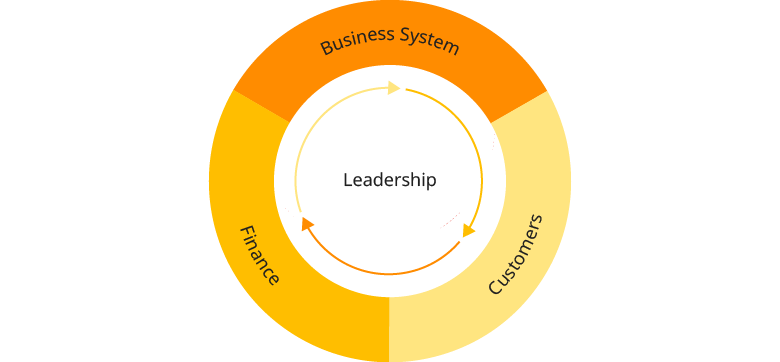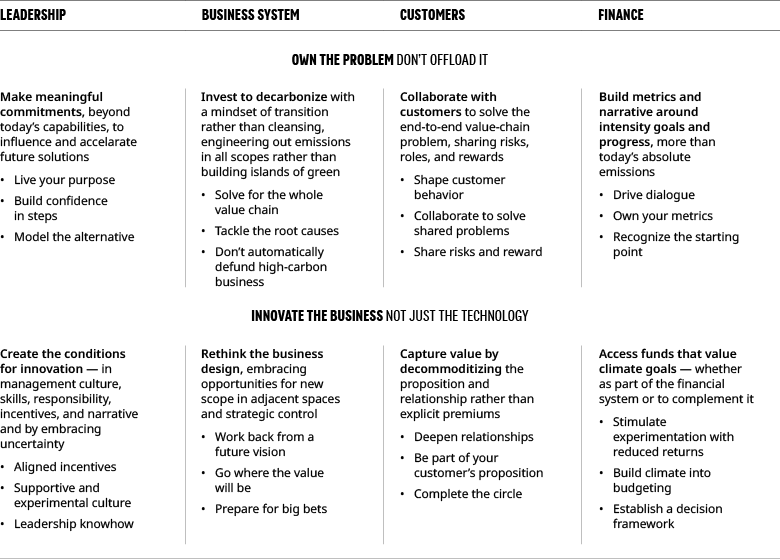This report is co-authored with the Climate Group.
More than a fifth of the world’s largest corporations, with combined sales of nearly $14 trillion, are estimated to have committed to reach net-zero carbon emissions by 2050 at the latest. Many more still need to do so. The challenge for all these corporations is to make their intentions real: to turn commitments into sustainable plans and actions.
Corporations need to do this at pace and at scale, to hit the 2030 emission reduction goals that are critical to achieving the goals of the 2015 Paris Agreement. They need to do it with the tools and the constraints they have today, without waiting for a more supportive environment. Yet they must achieve this within the normal pressures of sustaining and growing a profitable business: They have to deliver on both transition and commercial goals. Pursuing a climate agenda without commercial viability is not sustainable. On the other hand, a risk-based, commercially driven agenda focused on how climate change may impact the company — rather than how the company can impact climate change — won’t achieve the necessary transition.
 You need ambition-driven leadership — but then you need to back it upJames Close, Head of Climate Change at NatWest Group
You need ambition-driven leadership — but then you need to back it upJames Close, Head of Climate Change at NatWest Group
The good news is that practitioners turning commitments into actions have a vast collective experience. The aim of this report is to tap into that expertise and to distil it into a blueprint for a commercially smart transition. Working with the Climate Group, we talked to 27 major corporations across a broad range of industries.
A Blueprint For A Commercially Smart Transition
Through our conversations with practitioners and our consulting work we have identified four domains that businesses need to manage in order for their transition plans to be both commercially successful and to have impact. These are: leadership, the business system, customers, and finance.
We have structured the core of this report around these four domains. Each of our chapters explores key questions on these fronts.

Guiding Principles
Our explorations with practitioners highlighted two overarching themes that run across all four domains. These form the guiding principles for our blueprint.
Own the Problem Don't Offload It
Climate change is a collective action problem, and this comes across clearly in the approach of the climate action practitioners we talked with. Their mindset is not to offload the problem to other players, but to take it on and make the biggest impact they can, given who they are.
INNOVATE THE BUSINESS NOT JUST THE TECHNOLOGY
Less visible than innovations in enabling technologies such as hydrogen or carbon capture are the need and opportunity to innovate the business itself. This can involve strategically rethinking the business design or working tactically with customers, investors, and colleagues.
Our Blueprint
Applying these two guiding principles to the four domains yields our blueprint for a commercially smart transition. This is summarized here and then described in detail in the report.

Practitioners shared their stories with openness and humility, making clear their institutional drive and inventiveness. This report aims to capture and learn from their experiences. We hope other companies find this report helpful as they attempt commercially smart transitions, and welcome continuing the conversation.
This report features contributions from Gabriela Bertol, John Colas, Mike Peirce, Kaja Pergar, Louisa Plotnick, Rohan Poojara, and Amara-Maria Willendorf.


